Jo Ellis, Director of Education Outreach at Bay Area Lyme Foundation and Dan Salkeld, PhD, a foundation research scientist, lecturer at the Stanford Woods Institute for the Environment, and Professor at Colorado State University, recently attended the Association of Outdoor and Environmental Educators (AEOE) conference in Marin County, CA to update naturalists and outdoor educators on Lyme disease and tick-bite prevention.
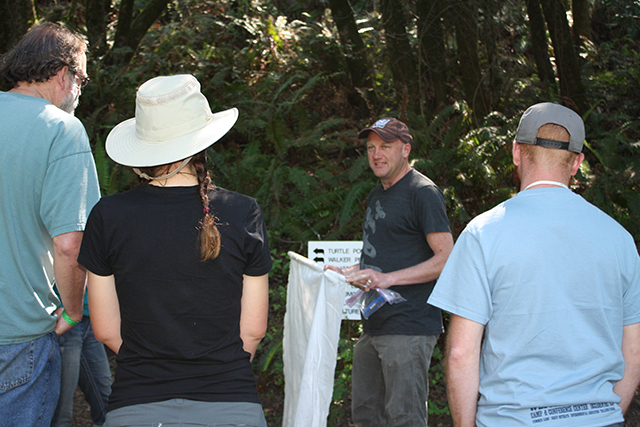 Here, Bay Area Lyme research scientist Dan Salkeld shows California naturalists how to drag for ticks at the Association for Environmental and Outdoor Educators annual conference.
Here, Bay Area Lyme research scientist Dan Salkeld shows California naturalists how to drag for ticks at the Association for Environmental and Outdoor Educators annual conference.
Outdoor educators and naturalists are typically people who have a deep love for the world’s natural beauty and are passionate about communicating this passion to school-age children. There are many full-time naturalists in California as the state curriculum standards include a week of outdoor education as part of the science curriculum for 4th-6th grade students.
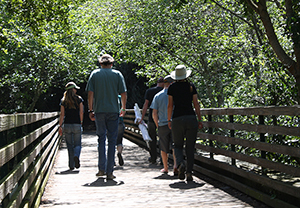 Fondly known as “outdoor ed,” public school children in California typically head out into nature for a week-long residential experience to learn about the environment, ecology, ecosystems, and the concepts of sustainability and collective responsibility for the fragile beauty of our wild places. As such, naturalists and professional outdoor educators are responsible for teaching children about personal safety when enjoying the outdoors. Bay Area Lyme identified this specific group of educators as a professional group that could help us achieve our goal of teaching 20,000 school-age children annually about tick-bite prevention, tick-borne diseases, and Lyme.
Fondly known as “outdoor ed,” public school children in California typically head out into nature for a week-long residential experience to learn about the environment, ecology, ecosystems, and the concepts of sustainability and collective responsibility for the fragile beauty of our wild places. As such, naturalists and professional outdoor educators are responsible for teaching children about personal safety when enjoying the outdoors. Bay Area Lyme identified this specific group of educators as a professional group that could help us achieve our goal of teaching 20,000 school-age children annually about tick-bite prevention, tick-borne diseases, and Lyme.
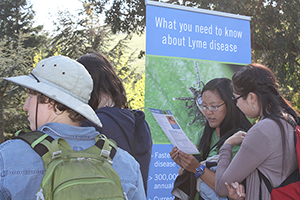 The Association for Environmental and Outdoor Educators (AEOE) invited us to offer a workshop on ticks and Lyme at their recent annual conference. We emphasized the outdoor educator’s role in teaching children to tick-check daily during outdoor ed, what to do if naturalists find a tick on a child, and how to communicate the incident appropriately to parents and teachers. The 2015 AEOE Spring conference was hosted at Walker Creek Ranch in Marin County. Over 400 outdoor educators gathered to participate in professional development in this stunning natural setting.
The Association for Environmental and Outdoor Educators (AEOE) invited us to offer a workshop on ticks and Lyme at their recent annual conference. We emphasized the outdoor educator’s role in teaching children to tick-check daily during outdoor ed, what to do if naturalists find a tick on a child, and how to communicate the incident appropriately to parents and teachers. The 2015 AEOE Spring conference was hosted at Walker Creek Ranch in Marin County. Over 400 outdoor educators gathered to participate in professional development in this stunning natural setting.
Walker Creek’s principal, George Stratman, warned the assembled group about the presence of ticks within the immediate vicinity, but when Dan Salkeld did a preliminary drag of a site immediately adjacent to the main campus, he was astounded to find larvae, nymphs, and adult Western black-legged ticks all within a 50-meter stretch of trail.
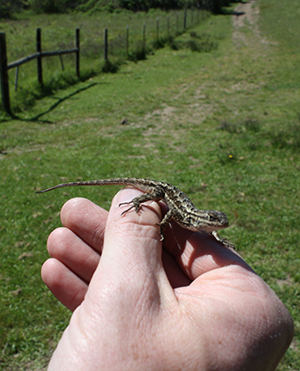 “It’s extremely rare to find examples of every stage of a tick’s life cycle within the same location ON THE SAME DAY,” said Dan. “Here we were, less than one minute into a hike on a main trail, and ticks were ABUNDANT.” Dan also caught multiple western fence lizards and was able to easily distinguish ticks embedded in the lizards’ necks.
“It’s extremely rare to find examples of every stage of a tick’s life cycle within the same location ON THE SAME DAY,” said Dan. “Here we were, less than one minute into a hike on a main trail, and ticks were ABUNDANT.” Dan also caught multiple western fence lizards and was able to easily distinguish ticks embedded in the lizards’ necks.
Salkeld continued: “Part of my job is to seek out spots of California that are loaded with ticks that can transmit diseases. This task might be considered onerous and unpleasant by some, but it is one of my favorite research activities because I have had the chance to explore northern California with a unique perspective and spend time in inspiring and beautiful places.
“But most inspiring of all, was being at an event where all the attendees are passionate about the outdoors themselves, and even more enthusiastic about introducing school-age children to share those same passions. 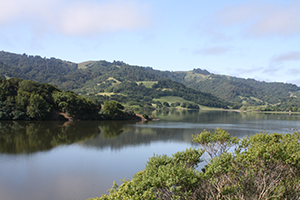 With the experiences of being in the outdoors come risks – mountain lions, sunburn, rattlers, and tick-borne diseases. So, we were at AEOE to raise awareness of ticks and Lyme disease so this danger can be mitigated. People are always astonished to realise how small the ticks actually are, and therefore understand how they might go undetected. At the same time, it was encouraging to see how many educators present were aware that Lyme disease and other tick-borne diseases are endemic in Northern California (parents: your children are in good hands!).
With the experiences of being in the outdoors come risks – mountain lions, sunburn, rattlers, and tick-borne diseases. So, we were at AEOE to raise awareness of ticks and Lyme disease so this danger can be mitigated. People are always astonished to realise how small the ticks actually are, and therefore understand how they might go undetected. At the same time, it was encouraging to see how many educators present were aware that Lyme disease and other tick-borne diseases are endemic in Northern California (parents: your children are in good hands!).
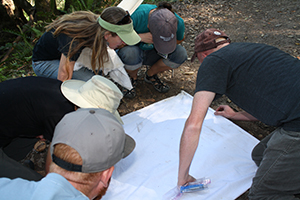
“Talking to people about ticks and tick bites drives home that education is a critical public health tool for combating tick-borne pathogens. Fear of exposure to these diseases should not stop people from enjoying a hike through woodlands and forests. And researchers like me should not be content to collect data and publish it: we should be communicating our science and gaining insights from the people who are actively using the California woods.”
Later that afternoon, Dan — along with Linda Giampa, Executive Director and Jo Ellis, Director of Education Outreach at Bay Area Lyme — participated in a “meet and greet” for all of the conference participants. We were able to reach out to scores of conferees and update them on the current statistics about the Lyme epidemic. Overall, it was a very successful outreach activity for Bay Area Lyme.
Thanks to AEOE for inviting us to be part of the event!
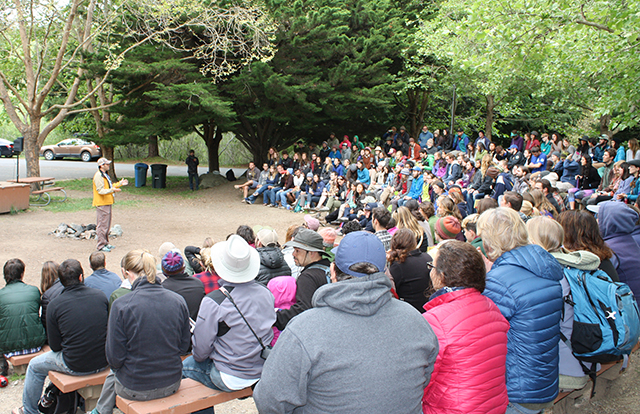
For more information about our education programs, click here.
To learn more about partnering with Bay Area Lyme Foundation about bringing these programs to your school or program, contact Jo Ellis, Outreach Director at jo@bayarealyme.org.
And, to learn more about preventing tick-bites and tick-borne diseases, see our prevention section.
*****
I am so glad that Bay Area Lyme Foundation was able to join this wonderful outdoors conference. Anything that can teach our kids more about their environment and how to enjoy it safely and to its fullest is the best thing ever. I’m sorry I missed it.